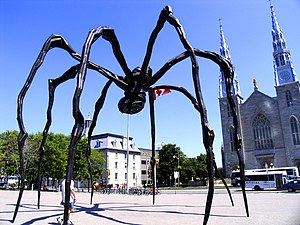CHILDHOOD
My father’s name was... Antonio Andolini, and this is for you... Don Ciccio. —Vito Corleone
Vito was born on December 7th 1891, in the small Sicilian village of Corleoneto Antonio Andolini. In 1901, his father, Antonio was murdered by a Sicilian Mafia boss named Don Ciccio because he refused to pay tribute to him. His older brother, Paolo, swore revenge, but was himself murdered soon after; Paolo’s murder was timed with the ultimate insult: during the funeral procession for his father. Eventually, Don Ciccio’s henchmen came to the residence of the Andolinis to take Vito away and have him killed as well. Desperate, Signora Andolini took her son to see the Mafia chieftain herself.
When she went to see Don Ciccio, she begged for forgiveness, but Don Ciccio refused, reasoning that the younger boy Vito would also seek revenge as an adult. Upon Don Ciccio’s refusal, Signora Andolini put a knife to his throat, allowing her son to escape at the expense of her own life. Later that night, he was smuggled away, fleeing Sicily to seek refuge in America on a cargo ship full of immigrants. Unable to speak English, he was renamed on Ellis Islandas Vito Corleone when the immigration clerks saw the tag pinned to his clothes labelled "Vito Andolini from Corleone".
Coming to America
Do me this favor. I won’t forget it. Ask your friends in the neighborhood about me. They’ll tell you I know how to return a favor... —Vito Corleone

Vito was later adopted by the Abbandando family in New York, and he befriended Genco Abbandando, who became like a brother to him. When he was eighteen, Vito married and started a family. Vito began making an honest living at Abbandando’s grocery store on Ninth Avenue, but lost the job, as an intimidated Abbandando was forced to employ the nephew of Don Fanucci, a blackhander and the local neighborhood padrone. Vito was forced to take up an unstable job doing back-breaking labor for the railroads, which he also lost during a mass-layoff.
Vito’s money troubles were soon solved when one night, a neighbor of Vito’s, Peter Clemenza, asks him to hide a stash of guns for him, and later, to repay the favor, takes him to a fancy apartment where they commit their first crime together, stealing an expensive rug. They soon became friends and, joined by a friend of Peter’s named Salvatore Tessio, the three soon learned to survive and prosper through petty crime and performing favors in return for loyalty. The three made good money by hijacking garment trucks, Vito being vital to these hijackings since he was one of the few people in Manhattan’s Little Italy at the time that knew how to drive a truck.Maman (sculpture)
Maman (1999) is a bronze, stainless steel, and marble sculpture by the artist Louise Bourgeois. The sculpture, which depicts a spider, is among the world's largest, measuring over 30 ft high and over 33 ft wide (927 x 891 x 1024 cm).[1] It includes a sac containing 32 marble eggs and its abdomen and thorax are made of ribbed bronze.
The title is the familiar French word for Mother (akin to Mummy). The sculpture was created in 1999 by Bourgeois as a part of her inaugural commission of The Unilever Series (2000), in the Turbine Hall at London's Tate Modern.[1] This original was created in steel, with an edition of six subsequent castings in bronze.[2]
| Maman | |
|---|---|

|
Friedrich Nietzsche's Twilight of the Idols (1888)
What does not kill me makes me stronger (German Was mich nicht umbringt macht mich stärker) is part of aphorism number 8 from the "Maxims and Arrows" section of Friedrich Nietzsche's Twilight of the Idols (1888)
